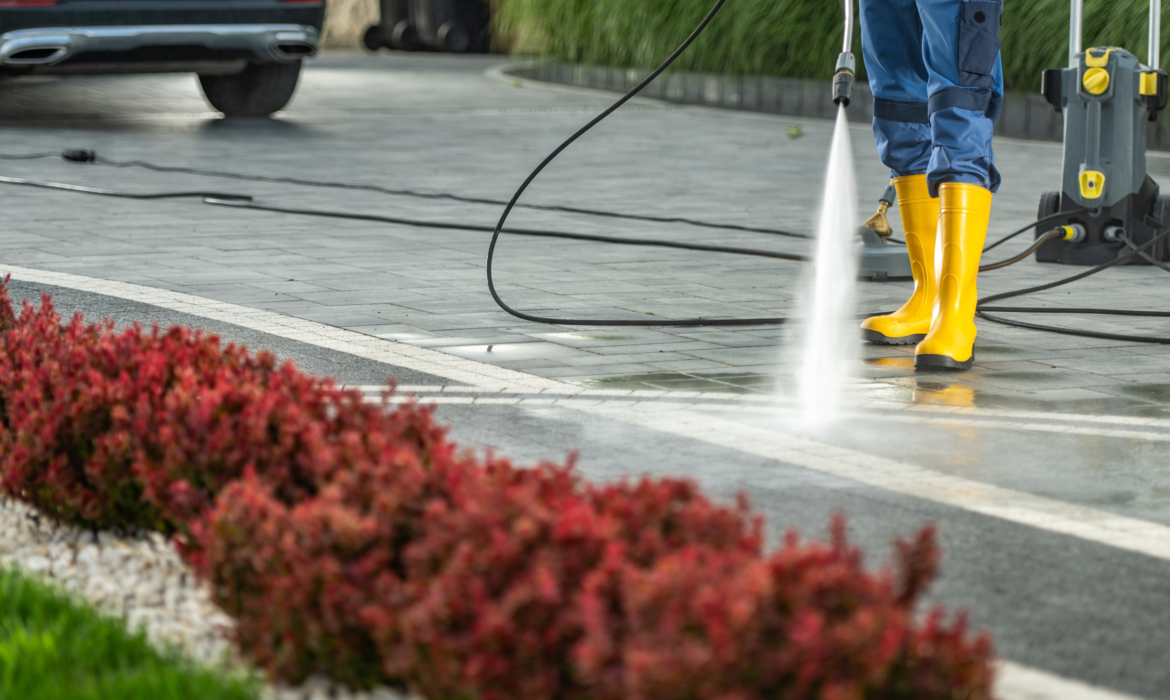Our site is here to help you survive winter and maintain your paved driveways and parking spaces. To ensure safety, prevent damage, and extend lifespan, these surfaces must be maintained before winter’s icy grasp.
Importance of Winter Maintenance for Paved Surfaces
Winter upkeep for paved surfaces is important for safety and preventing costly repairs. Rain, snow, and ice can seep into driveway and parking lot cracks as temperatures plummet. This water swells as it freezes, damaging the surface. Before winter, constantly maintain and inspect these areas to find cracks or potholes that need repair.
To avoid slip-and-fall accidents, keep your pavement clear of snow and ice. Snow may make roads dangerous for people and cars. Plowing or shoveling snow helps keep conditions safe.
Wintertime ice is another problem. Everyone using paved surfaces is at risk from ice formation. Salt or environmentally friendly de-icing solutions dissolve ice without damaging pavement.
Regular Inspections and Repairs
Maintaining your asphalt driveway or parking lot in winter requires regular inspections and repairs. Identifying and fixing issues before they become serious ones saves time, money, and headaches.
Check your paved surface first. Check for cracks, potholes, uneven surfaces, and water damage. Frost might aggravate them and cause extra damage. Take immediate action if you see damage.
Sealing small fractures with asphalt crack filler prevents water from causing greater damage. For long-lasting repairs, larger cracks or potholes may need professional repair.
Snow Removal Techniques
Winter upkeep for cemented roads and parking lots includes snow removal. When snow accumulates, it can make driving unsafe. Fortunately, there are various excellent snow removal and surface cleaning methods.
Plowing, which uses a vehicle with a plow blade to drive snow off the roadway, is popular. The method is rapid and effective for huge areas like parking lots. Be aware of any obstructions or curbs the plow could harm.
Another option is shoveling or snowblowing. This procedure takes longer but is more precise for cleansing small or hard-to-reach spots. When using a shovel or snow blower, raise it properly to avoid strain or injury.
Dealing with Ice and Frozen Surfaces
Winter may be dangerous, especially with ice and frozen surfaces. This is when you must protect your paved roads and parking lots.
Salt or de-icer works well for ice. These compounds dissolve ice, making removal easier. Overusing them can damage your pavement, so use them cautiously.
Mechanical methods like scraping or plowing can also handle ice surfaces. A snowplow or shovel can remove snow before it freezes. This lowers slips and falls and freeze-thaw fissures in the pavement.
Protecting Against Salt Damage
Salt melts ice and snow on driveways and parking lots in winter. Salt prevents slips and falls, but it damages pavement over time.
Sealing your paved surface before winter can prevent salt damage. Quality sealants prevent salt from penetrating pavement and producing fractures or degradation. Sealants also keep moisture out, preventing freezing and thawing cycles that harm surfaces.
Salt damage prevention also requires regular cleaning. Regularly sweeping or power washing your driveway or parking lot removes salt buildup. It prevents corrosion and maintains the beauty of your paved surface.

Best Practices for Long-Term Maintenance
Your paved driveway or parking lot needs long-term upkeep to last. By following recommended practices, you may reduce major repairs and keep your pavement looking great year after year.
Cleaning regularly is essential for long-term upkeep. To avoid damage, routinely remove leaves, dirt, and branches from the surface. Sweeping or leaf-blowing pavement cleans it.
Another long-term maintenance method is sealcoating. This layer protects against water, UV damage, and chemical spills like oil and gasoline. Sealcoat your pavement every 2-3 years to retain its integrity.
Your long-term maintenance strategy should include crack sealing. Cracks let water into the subbase, causing freeze-thaw damage. Apply a quality crack sealer immediately to prevent moisture ingress and extend pavement life.

